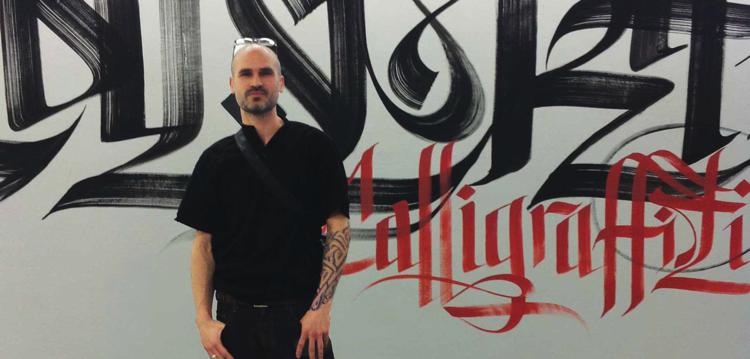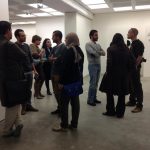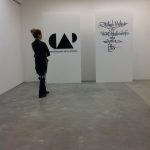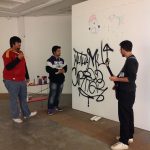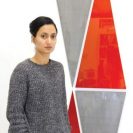Breathing new narratives on the warehouse walls, spray paint cans hissed colorful shapes and then the chaotic letters soon began to waltz on the walls, as calligraphy joined hands with graffiti.
Hafez is an artist who thinks outside the box. He has been exposed to several cultures and that has influenced his sensibilities, giving a new impetus to his hybrid art, marked by fluidity. His work has recently been attracting increasing amounts of attraction, be it Beirut or Berlin. Clearly, his beguiling letters have begun to make waves in the region, too.
Taking us on an enchanting journey, he recalled that it was in the eighties that he, as a young boy, got serious about the graffiti movement under the pseudonym Zepha. It was in the suburbs of Paris that he began to impose his name and his team, and hasn’t looked back since.
Graffiti brought Hafez the love for meeting and working alongside other artists and painting on large surfaces.” Not only a fresh perspective, it also brought about a certain energy to my work.”
“But before everything else, one must nurture the love for letters, “ says Hafez.
“Also get ready to indulge in art for free, take risks and give your art for free, this is the main essence of calligraffiti,” he says with a smile.
Consequently, with passage of time, taking his spirit further, this promising artist evolved a distinct visual idiom of his own. Hafez developed a visual language which tends to amalgamate the craftsmanship of ancient civilizations, the movement of free figuration, abstraction, lyrical and street art.
Speaking of his art, he says, it is all about balancing the aesthetics of two worlds, ancient and modern.
“The hybrid configurations reveal various aspects, mixing mediums and crossbreeding techniques,” he adds, when asked to explain about the grandiose of his narratives.
Speaking of evolution of his artistic process he says, “Over time, my approach has been enriched with inspiration from artistic movement such as lyrical abstraction (informal art with G. Mathieu, H. Hartung, J. Degottex, Jay Defeo, G.Titus Caramel) and also of the free figuration as the influences of the premier art, writing and art of ancient civilizations.”
“A range of technique and medium ranging from graffiti, going through calligraphy and engraving, allows me to highlight my questioning about the processes.”
He admits that Arabic calligraphy has strongly influenced his work and says it was a bit of artistic renaissance, training under the acclaimed Moroccan artist Abdelatif Mustad and his voyage through the works of the Sudanese Ahmed Abdel Aal.
He is happy to note that calligraffiti is no longer confined to the bohemian artists; it is being accepted in main stream.
Speaking at the workshop, Hafez expressed his admiration for random graffiti that appears in Kuwait, and said he was amazed with the quality.
Finally, he introduced the young artists to the unique reality of the world of calligraffiti. “Learn to live in the present…the calligraffiti art is not permanent.You may be the king today….but tomorrow your work may be erased or repainted, and someone else will reign. Be prepared for that.”
For more information on Contemporary Art Platform please visit www.capkuwait.com.



